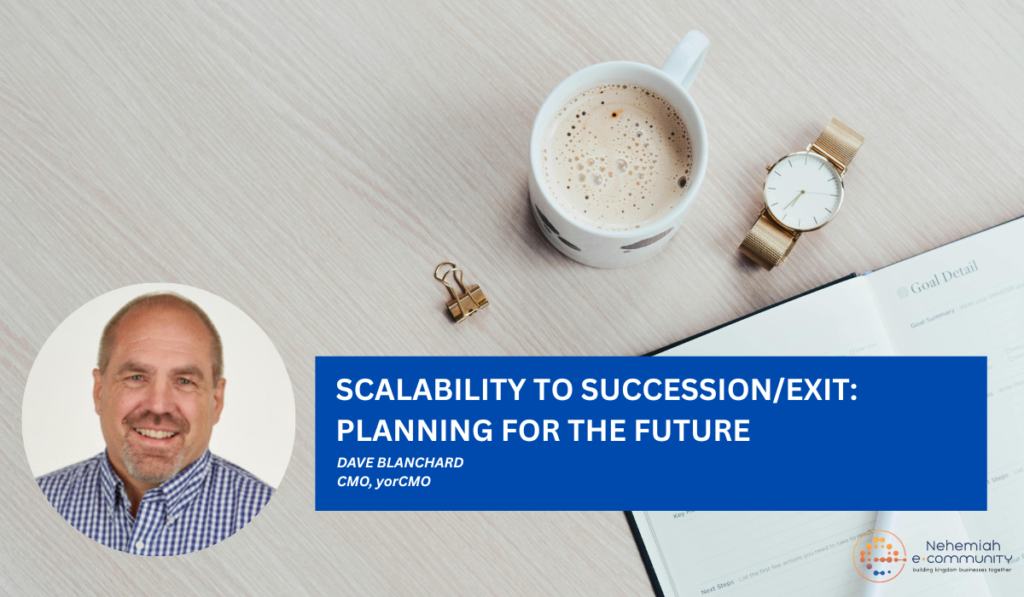Scalability to Succession/Exit: Planning for the Future
The transition from a scalable business to succession or exit represents the culmination of an entrepreneur’s journey. This stage focuses on optimizing the business for long-term value, whether the goal is to pass it on to new leadership or prepare for a sale. For manufacturing businesses, this often involves refining operations, maximizing profitability, and creating systems that can thrive without the original owner’s day-to-day involvement.
Focusing on Customer Profitability and Lifetime Value
At this stage, it’s crucial to deeply understand and optimize the profitability of your customer base. This involves:
- Customer Segmentation Analysis: Identify your most profitable customer segments and understand their characteristics.
- Lifetime Value (LTV) Calculation: Develop robust models to calculate the long-term value of different customer types.
- Cost-to-Serve Analysis: Understand the true cost of serving different customer segments, including hidden costs.
- Profitability-Driven Strategies: Develop strategies to increase the profitability of existing customers and attract more high-value customers.
- Customer Retention Programs: Implement targeted retention programs for your most valuable customers.
By focusing on customer profitability and LTV, you create a more valuable business that’s attractive to potential buyers or successors.
Diversifying the Customer Portfolio
A diverse customer base reduces risk and increases business value. Key strategies include:
- Market Expansion: Enter new geographic markets or industry verticals.
- Product Diversification: Develop new products or services that appeal to different customer segments.
- Channel Diversification: Explore new sales channels to reach a broader customer base.
- Strategic Partnerships: Form alliances that open up new customer segments.
- Acquisition Strategy: Consider acquiring complementary businesses to rapidly expand your customer base.
A well-diversified customer portfolio demonstrates the business’s resilience and growth potential, key factors in succession planning or exit strategies.
Preparing Marketing Systems for Succession
Effective marketing systems should be able to function without the original owner’s constant input. This involves:
- Documented Strategies and Processes: Create comprehensive documentation of all marketing strategies, processes, and best practices.
- Automated Systems: Implement marketing automation tools that can manage routine tasks and campaigns.
- Data-Driven Decision Making: Establish systems for collecting, analyzing, and acting on marketing data.
- Scalable Content Creation: Develop processes for consistently creating and distributing valuable content.
- Brand Guidelines: Create detailed brand guidelines to ensure consistency in all marketing efforts.
- Training Programs: Develop training programs to quickly bring new team members up to speed on marketing systems.
These systems ensure that the marketing function can continue to perform effectively during and after a transition in ownership or leadership.
Strategies for Detaching the Owner from Marketing Operations
Reducing the business’s dependence on the owner is crucial for successful succession or exit. Strategies include:
- Hiring a CMO or Marketing Director: Bring in a high-level marketing professional to take over strategic marketing leadership.
- Delegating Decision-Making: Gradually transfer decision-making authority to your marketing team.
- Creating a Marketing Council: Establish a group of key team members who collaboratively make marketing decisions.
- Implementing Approval Workflows: Create systems that allow marketing activities to proceed without the owner’s direct involvement.
- Regular Reporting Systems: Set up automated reporting systems that keep stakeholders informed without requiring the owner’s constant oversight.
- Client Relationship Transition: Gradually introduce key team members to important client relationships.
- Thought Leadership Transition: Begin positioning other team members as industry thought leaders alongside (and eventually in place of) the owner.
The goal is to create a marketing function that can operate effectively and maintain the company’s market position without the original owner’s day-to-day involvement.
Measuring Success in the Succession/Exit Stage
Key Performance Indicators (KPIs) for this stage might include:
- Customer Profitability Metrics: Average customer profitability, profitability by segment
- Customer Diversification Metrics: Customer concentration ratios, new market penetration rates
- Marketing Efficiency Metrics: Return on Marketing Investment (ROMI), Customer Acquisition Cost (CAC)
- Brand Equity Measures: Brand awareness, brand sentiment, market share
- Operational Independence Metrics: Percentage of decisions made without owner involvement, marketing team autonomy score
Regular monitoring of these KPIs helps ensure the business is on track for a successful transition.
Conclusion: Preparing for the Next Chapter
The journey from scalability to succession or exit is about creating a business that can thrive independently of its founder. By focusing on customer profitability, diversifying the customer base, building robust marketing systems, and reducing owner dependence, you create a more valuable and transferable business.
Whether the goal is to pass the business on to the next generation, sell to a larger entity, or transition to new leadership, the work done in this stage sets the foundation for the next chapter of the business’s story.
Remember, succession or exit planning is not a last-minute consideration. It’s a strategic process that should begin well in advance of any planned transition. By taking these steps, you not only increase the value of your business but also ensure that the legacy you’ve built can continue to grow and thrive long into the future.
For more great articles that provide you with insights to help you with your entrepreneurship journey from discovery to succession, click HERE to view the Nehemiah Entrepreneurship Community’s library of Kingdom Business Leaders Resources.
Interested to know more about upcoming events and educational opportunities offered by the Nehemiah Entrepreneurship Community? Click HERE!
Get yourself Nehemiah devotionals, transformative content, podcasts, and updates on all that is happening in the Nehemiah Entrepreneurship by subscribing to our newsletter for absolutely FREE! Click on the button below to get yourself subscribed:
